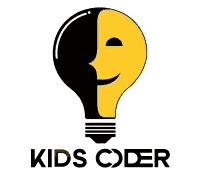Artificial intelligence has reached a point where it’s not just performing tasks it’s helping shape how we work, learn, and communicate. ChatGPT was one of the first large language models to enter daily use at scale, demonstrating the potential of AI in real time. But now, as new models enter the market, one question keeps surfacing: What Makes an AI Better Than ChatGPT? Understanding the answer offers insight into how AI is moving from conversational tools to full scale cognitive collaborators.
Explore how advanced AI is being designed to exceed ChatGPT by adding memory emotional intelligence logic and real time automation
The evolution beyond ChatGPT isn’t just about smarter responses it’s about more adaptable systems with lasting memory, logic-based decision making, emotional awareness, and real world integration. These aren’t upgrades—they’re essential steps toward building AI that works alongside us, not just for us
Building a Memory That Matters
ChatGPT can remember what you say within a session, but it forgets everything once that session ends. This makes long term use frustrating for users who want consistency.
Future AI models are built with persistent memory that carries over from session to session. They remember who you are, your preferences, project details, and even stylistic nuances. This memory allows for smoother interaction, less repetition, and greater trust over time.
Taking Initiative on Your Behalf
ChatGPT follows instructions. It won’t do anything unless you prompt it. That limits its usefulness in tasks that require monitoring or follow through.
Advanced AIs now feature agent based behavior meaning they can act independently within defined boundaries. If they detect unfinished work, they might follow up. If a deadline approaches, they could generate a summary or send reminders. These systems take action based on context, not just command.
Intelligence That Follows Logic
One major limitation with ChatGPT is its lack of true logical processing. It can sound convincing but occasionally contradict itself or miss simple steps in reasoning.
Next generation AI is being trained using reasoning engines. These models understand cause and effect, constraints, dependencies, and conditions. This allows them to solve problems, plan actions, and troubleshoot errors with greater accuracy and depth.
Understanding More Than Text
Most daily work involves more than just writing. People use data, visuals, voice, and video. ChatGPT is still limited to primarily textual interaction.
Emerging AI models are multimodal, which means they understand and respond across multiple formats. They can analyze spreadsheets, interpret diagrams, review documents, transcribe audio, and generate insights across all formats simultaneously.
Emotionally Intelligent Response
A smart response isn’t always the right one especially if the tone doesn’t fit. ChatGPT can’t detect emotion unless explicitly told. That makes it sound neutral even in emotionally sensitive situations.
Modern AI is being developed with sentiment and emotion detection capabilities. These systems adjust their tone depending on whether a user is frustrated, enthusiastic, or confused making them more human, more helpful, and more relatable in real time.
Specificity Over General Knowledge
ChatGPT’s strength is its wide reach. It knows a little about a lot but often misses the depth required in professional or technical fields.
That’s why next level AI is focused on domain specialization. Models are being trained on law, medicine, architecture, and more using real source material and verified data. This gives them a level of precision and relevance ChatGPT can’t always match.
Built In for Work Environments
ChatGPT requires integrations or plugins to connect with your tools. Many users don’t want to manage multiple systems or switch tabs constantly.
Newer AI is being built natively into software environments. Whether you’re using spreadsheets, calendars, task managers, or communication tools, AI lives inside them—ready to summarize notes, follow up on tasks, schedule meetings, or flag risks without needing manual setup.
Continuous Adaptation
Static AI quickly feels outdated. ChatGPT doesn’t learn from the way you work unless developers retrain it globally.
Advanced AIs now use personalized learning layers they adapt their tone, speed, structure, and behavior based on your usage patterns. Over time, they deliver more relevant suggestions and align better with your individual preferences.
Reliable and Transparent Decisions
ChatGPT provides answers, but it doesn’t always explain them. This leads to confusion, especially in high risk contexts where traceability matters.
Explainable AI is solving this by offering decision paths outlining why a recommendation was made, what data it was based on, and how conclusions were drawn. This transparency builds trust and enables adoption in industries with compliance requirements.
AI That Works With You
The most important advancement isn’t in performance metrics it’s in alignment. Future AI isn’t just smart. It’s supportive. It understands your goals, adapts to your behavior, anticipates what you need, and helps execute complex work with minimal input.
ChatGPT opened the door to generative AI. The next generation is stepping through it with a deeper understanding of what people actually need from task automation to emotional insight, from decision making to memory retention.

























